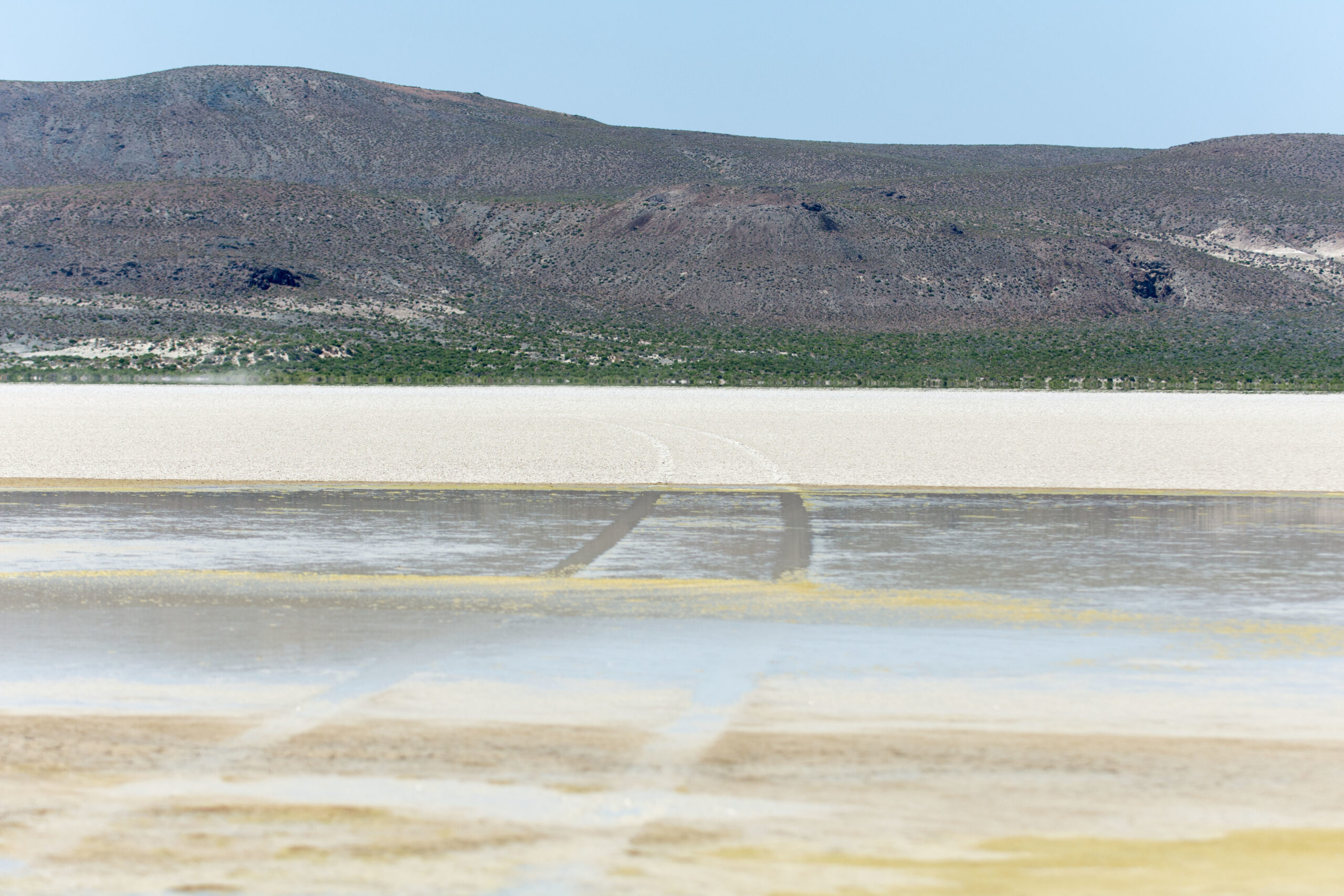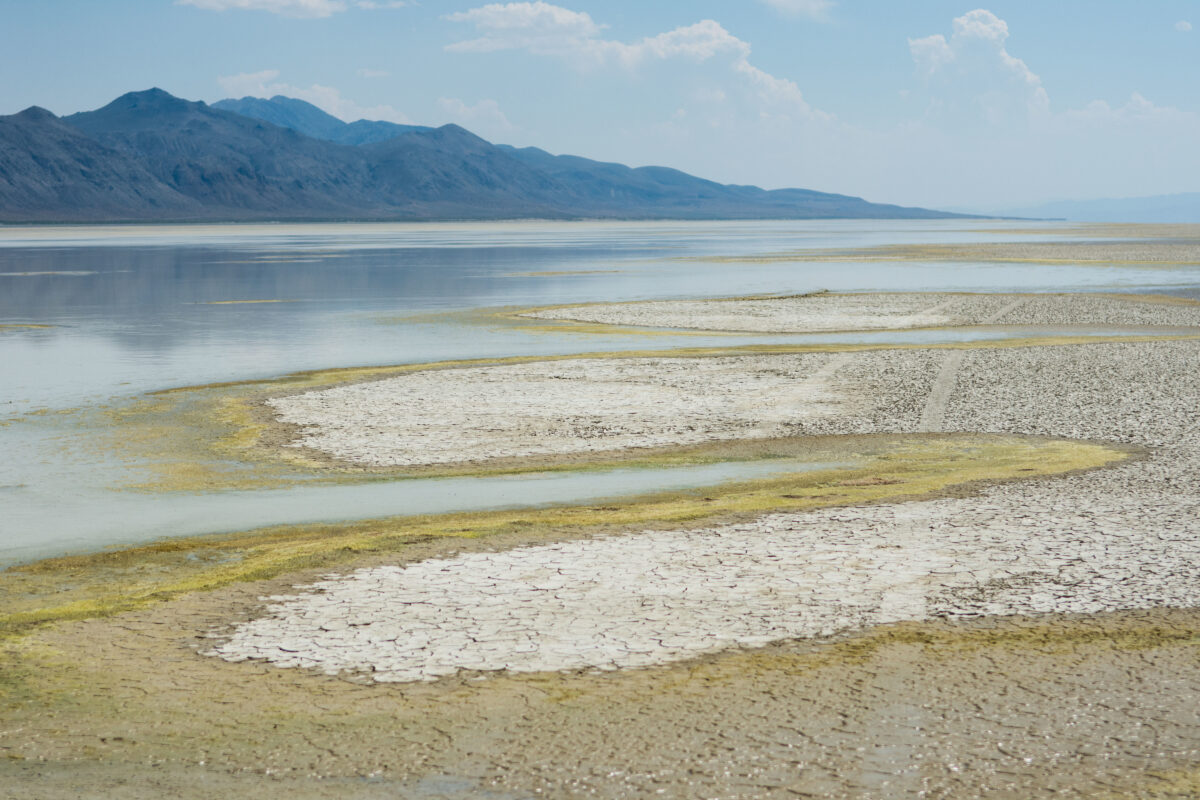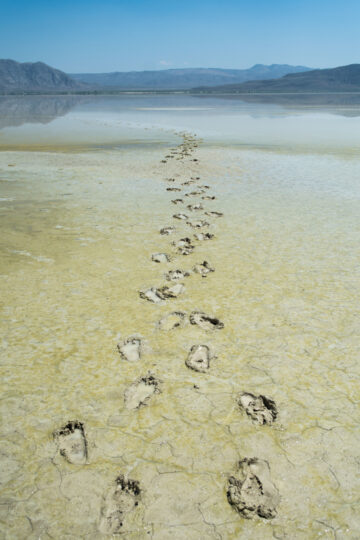‘Scars on the playa’: Rushed exodus from rain-soaked Burning Man could have adverse environmental impacts

Burning Man is a spectacle every year. Attendees flock to Northern Nevada in outlandishly decorated vehicles, erecting elaborate art installations in a remote patch of desert about two hours northeast of Reno.
But this year’s event garnered international attention when nearly 70,000 attendees were trapped in the desert following a storm that created exceptionally muddy conditions, rendering travel on the Black Rock Playa — the ancient lakebed where the event is held — virtually impossible.
Videos and photos shared across social media showed people with plastic bags strapped to their feet, trudging through the thick mud, and numerous vehicles abandoned somewhere between the festival’s Black Rock City and the closest paved road several miles away.
The New York Times called it “a rain-gorged stew of mud and slop” while the India-based Statesman called it “days of torrential rain.”
In reality, about a half inch of rain fell, primarily on Friday, according to National Weather Service meteorologist Mark Deutschendorf. The playa receives an average of 6.75 inches of rain annually.
In a 2019 analysis outlining the festival’s public health and safety concerns, the Bureau of Land Management — the federal agency that oversees the Black Rock-High Rock National Conservation Area — stated that more than a quarter inch of precipitation during a single rain event “can render the playa inaccessible by motor vehicles; this would result in sanitation and emergency response concerns.”
A similar rainstorm happened in 2014, when the playa received enough rain to suspend travel for about 12 hours. Rain events hindered public services such as portable toilet servicing and emergency response access by medical staff and law enforcement.
While the crisis is over and attendees are finally off the playa, the environmental impacts of 70,000 people on the unique and delicate ecosystem remain to be seen.
“Having all those people out there moving around when it’s wet, that’s a particularly sensitive time in shaping what the playa looks like,” said Joel Scheingross, assistant geology professor at UNR. “When you have people moving around, you’re going to have people eroding the playa in unnatural ways.”

Playas: ‘Very fine dust’ or sticky mud
The present-day Black Rock Playa was once part of ancient Lake Lahontan. When the deep lake dried up several thousand years ago, it left behind layers of fine sediment in what is now one of the largest, flattest surfaces above sea level on Earth.
The playa’s elevation varies by only about a meter, and it’s that lack of elevation change, and the thick layer of fine sediment, that creates the surreal and infinitely flat surface that draws visitors from around the world. It also helped form the conditions that led to the weekend’s Burning Man debacle.
Playas are essentially the lowest systems in a landscape, according to Paul Verburg, associate professor of soil science at UNR. In a closed system such as the Great Basin, where water and sediment flow in but never out, playas serve as catchalls, collecting water, salt, sediment and whatever else flows off surrounding mountains.
That runoff forms a unique surface — a top layer of crust that makes it harder for water to absorb into the ground, but no solid ground below.
“If you dig a hole in the playa, you’ll never find gravel or anything,” Verburg said. “It’s just very fine dust.”
Playa surface sediment is roughly 65 percent clay and 30 percent silt mixed with sand, according to Ken Adams, a Desert Research Institute professor emeritus who has studied the Black Rock Playa for decades. Soil with a high percentage of silt and clay has a higher water-holding capacity.
When the storm hit during Burning Man last weekend, it fell on ground that had a water-repelling crust on top and high water-holding capacity. On the heels of Hurricane Hilary, which had already dropped notable rain on Nevada, the rain that fell during Burning Man had nowhere to go.

“Water plus fine sediment equals mud,” UNR’s Scheingross said. “Naturally, if there weren’t 70,000 people out there, you’d just have standing water out there that would evaporate.”
But Burning Man creates an unnatural situation on the playa, especially during periods of rain. The normal cycle — rainfall, standing water and evaporation and infiltration — was interrupted by thousands of festival attendees walking, riding and driving across the playa.
When the rain hit, some Burners hunkered down, conserving water and rationing food. Some walked out, heading for State Route 34, the closest paved road, 5 miles away. And others loaded up vehicles and attempted to drive out, quickly getting stuck in the thick, viscous mud.
When the playa is wet, the best thing to do is to avoid driving on it, BLM wilderness specialist Kathy Torrence said in an email. If someone is already on the playa and it begins to rain, the next best option is to stay put until the playa dries.
When someone drives on the wet playa, the clay clings to tires, filling in the tread and reducing traction. The buildup on the tires causes them to spin in place, and trying to get unstuck can cause vehicles to create ruts and sink deeper into the wet playa. Those vehicles often need to be dug or towed out, Torrence said.
Driving across the wet playa is “essentially going to leave scars on the playa,” Scheingross said. “Tire tracks and ruts and things [like] that will last years or decades, and that could have ecological significance.”
Scientists concerned about long-term impacts
Depending on their field of study, scientists have different concerns about how the rain-drenched Burning Man will affect the playa.
Adams’ concern centers around the impacts on branchiopods – tiny crustaceans including fairy shrimp, water fleas and tadpole shrimp that lay eggs in dry playa soil, waiting for the next flood.
In the mid-2000s, Adams and another DRI scientist studied the playa, a region that Adams says can look like “a barren lifeless plane of clay and silt.”
But when rain falls and creates shallow lakes on the playa, those eggs hatch, and a “whole community pops out,” Adams said. “There’s a whole food web that’s oftentimes not very visible.” The branchiopods are a source of food for migrating birds, connecting the normally arid playas to wetlands.
During this year’s festival, Burners were picking up the tiny creatures, posting pictures and videos on social media and calling them “three-eyed shrimp.” With such fleeting water sources, the creatures hatch in a matter of days, laying eggs that will survive through the next drought and incubate quickly in the next rain.
Verburg, the soil scientist, worries about the risk of wind erosion.
The special recreation permit Burning Man must acquire from the BLM requires the group to return the playa to its natural state. In addition to removing trash, Burning Man runs trucks with large rakes behind them to smooth out bumps and ruts, Torrence said in an email.
Verburg says this year, that effort could do more harm than good.
“When it starts to dry out, you lose any structure in those soils,” he said. “You’ve dislodged a lot of particles that would otherwise be stuck together in the soil.”
“It’s the same thing when you see a farmer running a plow through a field,” he added. “You see these massive dust clouds behind him … as things dry out, you may have a higher risk of wind erosion.”
The playa crust acts as a temporary seal for water infiltration, he said. This year’s event likely caused changes that will take a long time to restore, and it could change the way the playa absorbs rain in the future.
“These playas weren’t formed in a day. If they get torn up, they may restore themselves, but it may take a while,” Verburg said. “It’s going to be a real challenge to assess what those impacts are going to be and what the best way to mitigate it is.”
